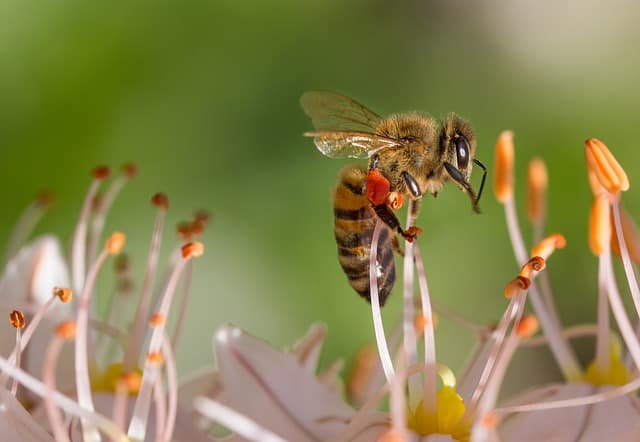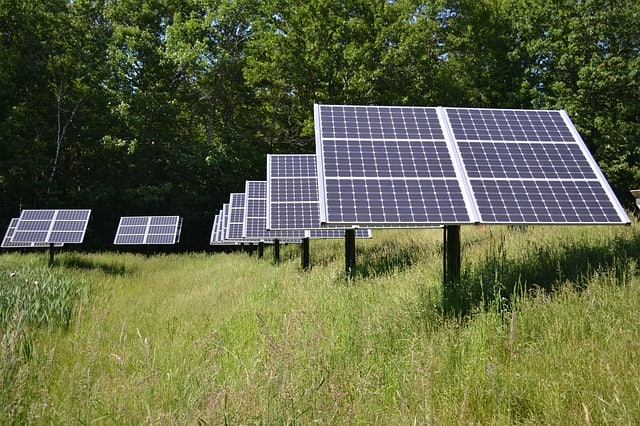Every day we see some amazing flying, crawling, swarming, buzzing and most times beautiful insects around us. Irrespective of where we go to or when we go there, they are actively present and present to us the fantastic sites of nature.
Their importance is numerous in every niche where they are found, and despite the harmful effect some of them may have on us, a majority of them are very beneficial to us. These fantastic creatures are taxonomically called arthropods and classified as the insect from whence their popular collective English name, the insect is derived.
Insects are said to be the most abundant living creatures on the earth with over two million named species and millions of other unnamed species. This makes you wonder? Do insect have any effect on the environment?. They are integral members of the ecosystem and have attracted global research interest under the subject called entomology.
In most climes, insects are considered to be dangerous creatures because much research findings have been obtained from insects of medical importance such as malaria-causing mosquitoes. In other words, medical entomology is the most popular branch of entomology and is followed closely by agricultural entomology due to the attention which pest insects have derived over the years.
However, insects are beneficial to man, medicine, agriculture and the environment in so many ways. This also does not deny the facts that they contribute significantly to many human, plants and animal problems. It is essential to even know that these groups of insects are meager when compared to the abundant beneficial species.
The effects of insects on the environment include both positive and negative effects. It is essential that we know these effects and judges these creatures well.
Effects of Insects on The Environment
Insects have numerous effects on an environment where they are found, and these effects are sometimes beneficial, and at other times they are non-beneficial. Therefore, to comprehend this phenomenon, I would try to explain this to you under two categories:
- Non-beneficial effects of Insects on the Environment
- Beneficial effects of Insects on the Environment
Non-beneficial Effects of Insects on The Environment
-
Nuisance
Most insects especially when they swarm in groups’ causes’ annoyance and public discomfort to both humans and animal dwellers in the environment where they dwell. The buzzing sound of the mosquitoes could affect the sleeping pattern of most humans resulting in psychological stress which could affect their work productivity and the economy. Also, some insects when they swarm can cause blur vision for these animals and humans in the environment where they found, while others are attracted to open wounds of some animals and causes discomfort to them.
-
Disease vector and contaminants
There are many insects which are vectors of many diseases and their others also which serve as a mode of transmission of many conditions causing microorganisms from their primary sources to places like food and water where through which they are transmitted to animal and the human host where they cause infections.
Insects such as mosquitoes, black fly and Tse-tse fly are popular vectors of infectious diseases such as malaria, river blindness or onchocerciasis and sleeping sickness. Others such as the widespread housefly cause transmission of disease-causing organisms from refuse or sewage depots where they are found to food that man and animal ingest, causing sicknesses. Besides, some of these insects carry allergens that could cause hypersensitivity reactions such as asthma in some patients.
Precisely amongst animals, ticks, Hippobosca and Menopon are blood-sucking insects of cattle, horses, and chickens respectively.
- Injury, Chemical Poisoning, and Death
Some insects such as, bees, red ants, can cause injuries when they bite or sting which leaves both man and animal vulnerable to diseases. Some of these insects especially within the group mentioned above could cause chemical poisoning and even death when they bite or sting.
-
Pest Infestation
Some insects in their various developmental stages like caterpillars, locusts, and aphids are notorious for destroying plant leaves and sucking juices from the stalk of many plants. These pest insects destroy forest trees, fruits, grains, and growing farm and garden crops.
These pests reduce crop yields which result in food scarcity and possibly starvation depending on the threshold of infestation. For example, the larvae of Lepidoptera Chilo could bore holes into stems of sugar cane and damages the sugar cane sucking the juice. Other insects such as Pyrausta larvae drilled holes in the stems and fruits of maize and then destroy them.
Furthermore, the presence of these pests leads to environmental pollution indirectly by increasing the use of pesticides which are great nitrogen depot and source of ammonia which is responsible for air pollution.
-
Food Destruction
Insects such as the bean weevil destroys stored beans and reduce them to almost dust if they are allowed to live with them for an extended period. To manage this, these beans are stored with many chemical preservatives that could cause food poisoning when the seeds are not adequately preserved.
Other insects such as cockroaches and flies also damage food and make them inconvenient for consumption. In addition to food destruction, some of these insects destroy clothes. Insects such as moths often lay their eggs on human clothing which results in their damage when they hatch into larva forms. The larvae of these insects feed on these clothing’s’ and destroy them.
-
Destruction of Infastructure
Insects such as termites which feed on wood may cause a wooden structure to collapse if they are not mitigated early enough. This could result in the loss of infrastructure involving forests leading to the displacement of people or injury.
-
Erosion
Burrowing insects like ants when they become abundant to make the soil porous and cause it to lose its water absorptive capacity. When there is a high rainfall over time, the soil surface is easily destroyed and washed away. This can cause some trees to fall.
Beneficial Effects of Insects on The Environment
-
Pollination
Although there are numerous methods of pollination and fertilization amongst flowering vegetables and fruit-bearing plants such as wind and water means, insect pollination has remained the most popular.
This pollination the gender causes us to have these nutritious and beautiful flowers, fruits and vegetables such as apples and blueberries in abundance which contribute a high fraction to the food we eat. In fact, some plants such as the orchid have evolved with this trend that only particular species of insect could pollinate and fertilize it.
-
Food and Food Product Sources
Insects represent a reservoir of food and food production resources for both humans and animals. Many reptiles, birds, and amphibians feed on most insects, and these serve as a source of food to them. Also, humans eat many insects such as grasshoppers and termites and even sell them out as food.
These insects are excellent sources of proteins and vitamins that are necessary for good health. In fact, in almost every clime, one insect or the other is exploited for food sources especially in developing countries.
In addition to this, the honey product of bees is used in the preparation of many food substances like cakes and fries, while providing another medicinal health benefit when consumed.
- Soil Aeration
There are many insects which cause the aeration of the soil especially burrowing ones. These insects such as ants, beetles, and bugs when they burrow into the ground make it highly porous to increase percolation of essential soil nutrients and water into the soil which aerates it and makes it yield well when food crops are grown on such land.
-
Soil Enrichment
Insects are a vast depot of nitrogen and other chemicals that enriches the soil with proper nutrients when they die. They do this when they excrete their feces pellets to the ground. Also, when they die they decompose, and these essential nutrients that constitute their physiology are released into the soil, and they enrich the land.
-
Primary Decomposers
Insects such as the carpet beetles are great decomposers of organic matter. Most of these insects feed on these natural waste products and decompose them thereby releasing their essential nutrients into the soil. Although microorganisms such as saprophytic bacteria and fungi represent the primary decomposers of organic matter, insects make this very easy for these microorganisms by breaking the large chunk of these products into smaller bits.
Thus, they contribute to the sanitization of the environment. In fact, some museums have adopted insects and use them as an efficient means of stripping the bones of historical and educative animals of their organic flesh. For example, some museum workers identify colonies of carpet beetles and drop mammals whose bones they wish to preserve there for excellent natural cleaning.
-
Pest Control
Although, there are many herbivorous insects which are pests and which destroys food products and essential plants in farms and bushes where they grow, there are other insects in the ecosystem that feed on these herbivorous pests. Caterpillar hunters such as praying mantises, pirate bugs and beetles are parasitic insects that feed on the caterpillar and other herbivorous insects grossly reduce their population and their overall effects.
For example, Stagomantis feeds on grasshoppers, caterpillars and some flies which are all injurious to many plants while some beetles such as the Chilomenes feed well on aphids which are also notorious for destroying plants.
In addition to this, other insects such as the braconid wasp which lay their eggs on certain species of hornworms like those who infest the tomato destroy these hornworms when the eggs hatch. On hatching, the larvae of these braconid wasps feed on these hornworms and mitigate their destructive effects on the tomato plant.
-
Weed Control
Some plant feeding insects are specific and feed on plants which are weeds. These kinds of herbivorous insects could control the weed population in farms and gardens that compete with essential nutrients that these plants derived from the soil.
-
Aesthetics and Beauty
Insects are notorious for various branches of arts and are attractive and pleasant to our sight senses. Butterflies are trendy amongst humans as beautiful and attractive flying creatures that come with original designs that have been borrowed by many fashion industrialists in producing colorful designs for their products.
In some parts of the world, insects have been used to make fashion accessories while historically they have symbolized certain gods.
Conclusion
Before I conclude on this topic, I would love to give you some more educative details about these creatures. I would have included it in the early parts of this article, but in order not to bug you with information which you did not primarily desire to gain, I decided to place this here.
Insects are members of the phylum athropoda, and they popularly referred to as hexapods because they have three pairs of legs. They are divided into three parts (the head, the thorax, and abdomen) and a couple of antennae. Some of them have wings; others could have at different stages of their lifecycles while some have wings all through their lives.
Insects constitute over half of the world animal population, and they play an integral role in the ecosystem and relates well with both plant and animals. Their effects in the environment have been described above to include both beneficial and detrimental effects.
Some of the beneficial effects include their contribution to food sources and reservoir, plant pollination, nutrients recycling, and soil aeration and enrichment. The detrimental effects are mainly related to diseases and nuisance. However, the beneficial effects of insects to the environment supersede the damaging effects.
Economically, they are essential because some of them could produce silk that is woven to create many types of clothing in different parts of the world. Others such as Dactylopius are dried and used for making cochineal dyes.
Insects are vital to us. Their adverse effects have many means of avoidance while their positive results should attract more research and exploitation because we are yet to know everything about these species.




